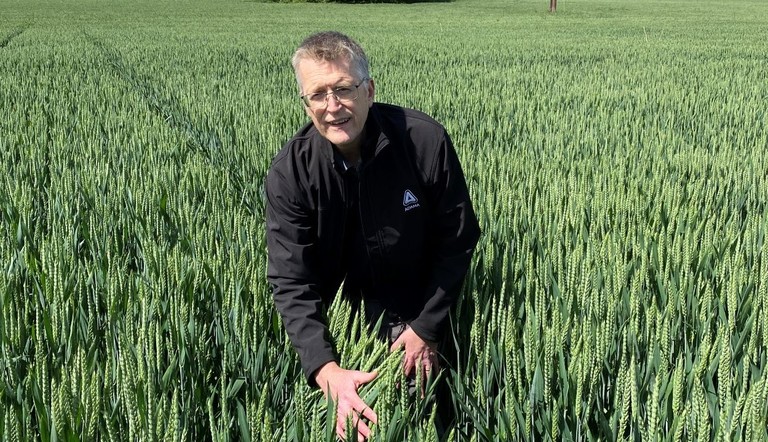
Nothing quick or easy in cereal resistance battle

The speed and complexity of mutations in Septoria (wheat) and Ramularia (barley) is continuing to thwart science’s search for a silver bullet. That’s according to global fungicide authority and ADAMA UK Technical Specialist Andy Bailey.
ADAMA New Zealand is in close contact with Andy and his colleagues in the UK who regularly share information which may benefit local growers and agronomists. The UK was a bellwether for resistance, with it appearing there a full decade before the threat emerged in New Zealand.
Speaking recently from the UK, Andy said novel mutations are still being found despite some thinking the situation wouldn’t get worse. This is at a time when demand for cereals is soaring, and yield and certainty of supply are in the spotlight.
Cereal breeding, a key part of the resistance-breaking toolbox, was initially expected to be a panacea. But, Andy said, the much hoped-for breakthrough has not materialised. “Last year, a lot of resistant wheat varieties were bred. There are some excellent varieties, but it’s just not that straightforward.” While the initial trade-off between yield and resistance was navigated, those varieties too have proven unequal to the pathogens’ ability to keep several steps ahead.
Careful stewardship of single-site chemistry required
Andy’s now very urgent calls for careful stewardship of single-site chemistry is not new. It is, he said, a highly effective and well proven approach. A long-time advocate of the role multi-sites have to play in protecting and prolonging the life of new and existing DMIs, Andy said he is doubling down on advice he gave in 2017, the first time he visited New Zealand, regarding the importance of chemistry such as ADAMA New Zealand’s Phoenix® Fungicide (Phoenix). There is no recorded resistance to folpet, the active ingredient in Phoenix, and it does not inhibit DMIs’ uptake, ensuring their speed of action and efficacy.
Then, as now, Andy said, Phoenix should be the first thing in the tank. “Even if new single site chemistry is fantastic, we still need multi-sites. You can’t get away from the fact that even the best single-site still has the same mode of action as established single-sites.”
In contrast to single-sites, multi-sites have the advantage of acting on more than one biochemical pathway, which gives them exceptionally low risk of resistance. This makes them the ideal partner to help protect and prolong the lifespan of other medium to high resistance-risk fungicides.
“New chemistry may start well, but, if not supported correctly, a few years later it’ll end up in the same situation as the weaker, older chemistry.” Andy warned.
Andy said recent UK trials also suggest there may also be a financial benefit in using a multi-site. “Multi-site chemistry protects leaf area and provides yield benefits. It pays for itself.”
Thinking about the future and taking action key
Recent drier seasons in New Zealand’s cereal growing areas may have reduced some Septoria pressure in wheat. However, ADAMA New Zealand Commercial Manager Daren Mabey, says now is not the time to take our eyes off the ball. “It is still a real risk to yields, especially in the high-value and more susceptible varieties. What’s really important here is to think about the future, to learn from overseas experience, and to take action.”
Daren says the new single-site chemistry on the market in this country receives good protection from Phoenix. Phoenix works against Septoria and Ramularia at a cellular level, inhibiting spore germination and cell division, and reducing energy production in the mitochondria.
ADAMA New Zealand recommends application of Phoenix at T1 for good Septoria control with a DMI such as Bolide® or other single-site chemistries.
Bolide, from ADAMA, is an all-rounder DMI fungicide, featuring an innovative combination of epoxiconazole and prochloraz. It is taken up via the stem and foliage and translocated upwards and outwards, providing some protection for new growth.
For barley if only one spray of Phoenix is being applied, then T2 is the optimum timing. This ensures that leaves 2 and 3 are protected. For best results though, even higher levels of Ramularia control can be achieved when using Phoenix at both T1 and at T2. These applications maximise the crop’s green leaf area index and maximise yields by promoting healthy spikelet and ear development.